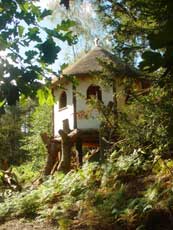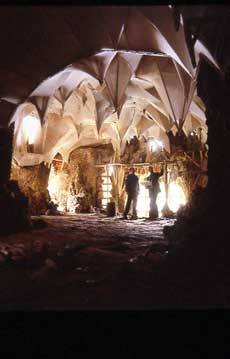Securing the future of the Park is the key challenge for the Trust.
Mike's task now is to carry forward the final stages of the restoration and ensure the sustainability of the Park for years to come.
Funding over the years has come from a combination of major and minor grants, plus donations from individual benefactors. Some £20 million has been raised from these sources, but keeping the Park's finances evenly balanced while funding further restoration remains an issue.
‘When I became involved, we took the decision that over the next couple of years we had to stabilise the finances of the park, ‘ says Mike. ‘We didn't feel that we were in a position to push forward with more restoration: we had enough on our hands looking after what we had on a limited budget.'
Visitor numbers have been building gradually, reaching 74,000 last year, and there was also a 44 per cent increase in membership. The Park is particularly popular among dog-walkers and local mums with young children.
‘The good thing about Painshill is that it's an evolving piece of art, and therefore there's always something new, whether it's in the landscape or the buildings, for people to come back again,' says Mike.
The optimum annual visitor number for the Park is 100,000, but more important is the spread as the landscape can only accommodate around 2000 people per day comfortably. Bank holidays are an important time for boosting ticket sales, but Painshill is particularly vulnerable to the weather, as it has no associated house as an alternative to the park, and visitors simply stay away if it rains.

The Hermitage, Painshill Park,
reconstructed in 2007.
Photograph by Mike Gove,
August 2008. Copyright
Mike Gove.
When I became involved, we took the decision that over the next couple of years we had to stabilise the finances of the park, ‘
Commercial income is very important, and requires careful handling to bring in enough revenue without having an adverse impact on the landscape. Originally, events such as weddings and corporate entertainments were held in the Park itself, but the sight of marquees during the summer months were destroying the historical ambience of the park. Now all events have been brought within the bounds of the walled garden, which makes them easier to service as well as conserving the landscape.
The Park relies heavily on volunteers, who last year contributed some 11,500 hours to the operation. Most of the volunteers are local, living within a five to 10-mile radius of Painshill, and competition for their time is fierce, given the Park's proximity to Royal Horticultural Society's Wisley Gardens and to the National Trust property Claremont.
Volunteers get involved in all parts of the operation, helping with ticket sales and in the office or shop, as well as working alongside the landscape team. Many give guided tours of the landscape, or outside talks, acting as ambassadors for the Park.
Visitor information and education has formed an important part of the project from the outset, and a schools education programme operates throughout the year. There are extra activities for children during the school holidays, such as craft workshops and mini-beast hunting, which help to generate income as well as attracting new visitors to the park.

A photograph of the interior of the Grotto at
Painshill Park by Fred Holmes, June 2006.
The picture shows the new stalactites of lath
and plaster on a frame of green oak.
Copyright Fred Holmes.
‘The good thing about Painshill is that it's an evolving piece of art, and therefore there's always something new, whether it's in the landscape or the buildings, for people to come back again,'
